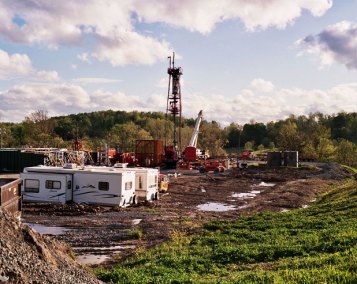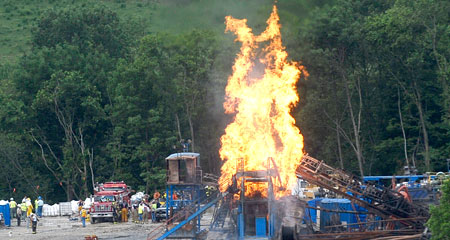By Bernhard Debatin
A new study on the Impacts of Gas Drilling on Human and Animal Health (*) shows that fracking fluids, methane gas exposure, and other gas-drilling related contamination can have a serious impact on the health of both humans and animals. The study, conducted by private practice veterinarian Michelle Bamberger and Robert E. Oswald of the Department of Molecular Medicine at Cornell University, investigated 24 different sites with gas wells, 18 of which were horizontal hydro-fractured wells. The researchers observed and documented severe changes in health of both humans and animals living close to these sites. The majority of the observed animals were cows; other animals included horses, goats, llamas, chickens, dogs, cats, and koi.
 Bamberger and Oswald interviewed animal owners affected by gas drilling in six different states (Colorado, Louisiana, New York, Pennsylvania, Ohio, and Texas). In addition, they obtained lab test results and data from drilling companies and state regulatory agencies. The most striking finding of the study is the death of over 100 cows, caused by their exposure to fracking fluids or drinking of fracking wastewater that was dumped or leaked into freshwater sources. Continue reading →
Bamberger and Oswald interviewed animal owners affected by gas drilling in six different states (Colorado, Louisiana, New York, Pennsylvania, Ohio, and Texas). In addition, they obtained lab test results and data from drilling companies and state regulatory agencies. The most striking finding of the study is the death of over 100 cows, caused by their exposure to fracking fluids or drinking of fracking wastewater that was dumped or leaked into freshwater sources. Continue reading →












You must be logged in to post a comment.